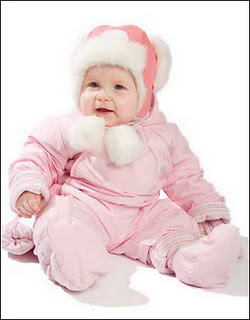 Babies start to become more active between six to ten months. Because of this, some parents are excited to learn how to help baby crawl. After babies learn to get up on their hands and knees, it seems like they begin to actually start moving forever. But before you try to help your baby crawl, make sure she has developed enough muscle strength in the arms and legs to support herself.
Babies start to become more active between six to ten months. Because of this, some parents are excited to learn how to help baby crawl. After babies learn to get up on their hands and knees, it seems like they begin to actually start moving forever. But before you try to help your baby crawl, make sure she has developed enough muscle strength in the arms and legs to support herself.
How to Help Baby Crawl
Crawling is not only a step towards learning how to walk, but also aids in further brain development. If you want to help your baby learn how to crawl, at first, you should make sure she is ready by looking for signs like supporting the head, rolling over, and sitting up. Here are some ways you can help baby to crawl.
1. Increase Tummy Time
When your baby starts to roll over and hold the head up, you know she is ready to spend some time on the tummy to start exploring surroundings. Begin by giving baby a minute on the tummy, the time can be longer when the baby becomes more comfortable. She will soon develop muscle strength in the neck, shoulder, arms and legs, and will be ready to crawl in no time. Remember to make tummy time enjoyable for your baby, get down to her level, talk to her and show her some toys.
2. Limit Time in Baby Carrier or Baby Seats
Baby seats, carriers and walkers often limit your baby’s movements instead of stimulating them to be active. Let your baby sit a few minutes, and you should also allow the baby to play on the tummy more during the waking hours, which will stimulate her to move more instead of staring at toys or mobiles.
3. Ensure the Safety and Comfort of the Place That Baby Crawls
Choose some childproof things to make the room safe for a baby who is learning to crawl and explore the house. Protect her from falling down the stairs by installing stairway gates. Place a comfortable blanket or carpet on hardwood floors to reduce bumps and injuries, but make sure the surface is not too soft, which will make crawling become difficult.
4. Give Baby Motivations
- ?Favorite toy out of reach
One way to motivate your baby to crawl is to put a toy out of reach and encourage the baby to get it. This can help her to learn how to move forward. Starting by rocking oneself back and forth, the baby will comes closer to the toy.
- ?Distance between you and baby
Keep some distance from your baby and ask her to come over by crawling. It may take some time, so if she gets frustrated, just go to her so she does not cry from frustration. This can make your baby know that crawling is not a scary thing.
- ?A mirror in front of baby
Babies are attracted to their own images that are reflected in a mirror, so position one mirror about 10 inches in front of her, ensuring that she can see herself easily. This will make her want to come forward by crawling to have a closer view of herself.
5. Crawl with Your Baby
One way to encourage your baby is to crawl along her side instead of asking her to come towards you. You can both move towards a toy, mirror or your partner. This will also make her feel like that she is playing a game with you. An older sibling crawling next to baby also works well.
6. Give Some Award After Crawl
Encouragement and reward go together, so when your baby makes some progress, show her lots of praise, physical attention and treats. Positive reactions help them feel more excited about crawling time and will make them try harder. Make sure she feels satisfaction, instead of frustration, such as giving her the toy she wants to reach for when you see her trying.
7. Give Baby Physical Support
You can help to support your baby by placing your palms behind her feet when she is beginning to crawl. This stabilizes her and helps her to “push off” when learning to crawl.
Here are some tips for how to help baby crawl visually:
Fun Time — Do You Know?
 Recent findings show that babies who are born in summer or fall tend to learn crawling later than babies born in winter or spring. Why? Because by the time they are supposed to learn crawling, babies born in summer or fall have difficulty moving around with their restrictive winter clothes.
Recent findings show that babies who are born in summer or fall tend to learn crawling later than babies born in winter or spring. Why? Because by the time they are supposed to learn crawling, babies born in summer or fall have difficulty moving around with their restrictive winter clothes.
